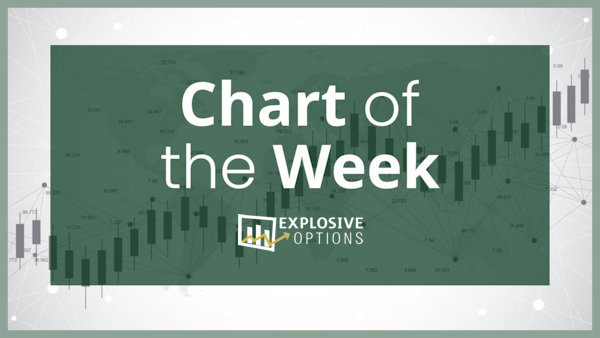Chart of the WeeK: US Treasury Yield Curve
This week we are going to be focusing on the US Treasury yield curve, something we haven’t done yet on chart of the week. But I thought it would be interesting to you show you the dynamic of the chart of Treasury yields versus what’s happening in the stock market.
As you see in front of you is a visual presentation of the Treasury yield curve. You can see the one month yields (on the left hand side) all the way out to six months are ticking well over 5%. You’d have to go all the way out two years to see anything that would drop below 5%. The two-year yield is roughly 5.01%. And if you go further out in time on the yield curve (three-year, five-year, seven-year), you see the yields drop all the way down towards 4.2% on the 10. The 20-year jumps up to 4.45% and the 30-year comes back down to about 4.3%.
You can see that the yields dropping here in the middle part of the curve, which is the belly of the curve, is where a lot of people are focused in on right now. They are waiting to see if these yields are going to climb if inflation continues to be bothersome, or if they decline as the Fed continues to monitor the situation, raising interest rates on the short end of the curve, and perhaps once and for all snuffing out inflation.
I want to show you this chart as well. This is called the dynamic yield curve with stockcharts.com, and you can see it’s a better graphic representation of the yield curve. It’s called the dynamic yield curve because if you put your cursor out over here on the right hand side on the S&P 500 chart, you can see the movement of the yield curve.
What the charts are telling us
Really what’s interesting for us is what’s happening right now. We have an inverted curve, which shows the Fed funds futures, which is on the left hand side, is much higher than the other yields over here. But we see more recently that the long end of the curve – the 10- and the 20-year – have really shot up in yield over the past few weeks.
What does that mean? It could mean the market is trying to price in strong growth or it means that inflation is still a problem and the market is pricing in higher inflation.
You can see down over here, about a year or so ago, we were well under 4% and as we move along the curve here and the time frame of the S&P 500, you can see that yields have steadily climbed to where we are today in August.
That’s the dynamic yield curve. It’s something we don’t use often to extrapolate bear or bull markets in the stock market. But it’s always helpful to know where bonds are at and where yields are at. It’s a reflection of what’s happening in the economy and eventually what happens in the stock market.
Don’t miss a single one of Bob’s charts! Get the Chart of the Week in your inbox every week!




















